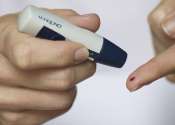Cardiac arrest survival rate rising in Sweden
Sudden cardiac arrest affects some 10,000 people in Sweden annually. Saving them is a race against the clock, and the actions of bystanders who can perform cardiopulmonary resuscitation (CPR) and use a defibrillator are entirely ...
Aug 26, 2022
0
5









